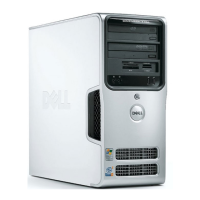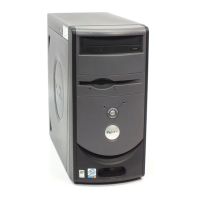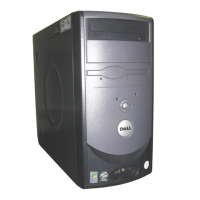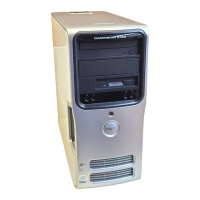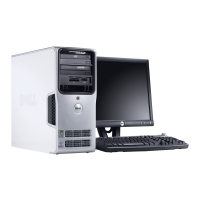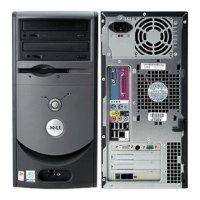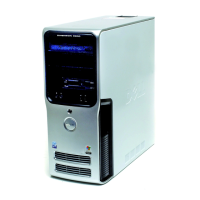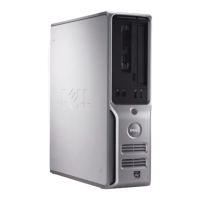Glossary 151
disk striping generally allow the user to select the data
unit size or stripe width.
DMA — direct memory access — A channel that allows
certain types of data transfer between RAM and a device
to bypass the processor.
docking device — See APR.
DMTF — Distributed Management Task Force — A
consortium of hardware and software companies who
develop management standards for distributed desktop,
network, enterprise, and Internet environments.
domain — A group of computers, programs, and devices
on a network that are administered as a unit with common
rules and procedures for use by a specific group of users. A
user logs on to the domain to gain access to the resources.
DRAM — dynamic random-access memory — Memory
that stores information in integrated circuits containing
capacitors.
driver — Software that allows the operating system to
control a device such as a printer. Many devices do not
work properly if the correct driver is not installed in the
computer.
DSL — Digital Subscriber Line — A technology that
provides a constant, high-speed Internet connection
through an analog telephone line.
dual-core — A technology in which two physical
computational units exist inside a single processor
package, thereby increasing computing efficiency and
multi-tasking ability.
dual display mode — A display setting that allows you to
use a second monitor as an extension of your display. Also
referred to as extended display mode.
DVD-R — DVD recordable — A recordable version of a
DVD. Data can be recorded only once onto a DVD-R.
Once recorded, the data cannot be erased or written over.
DVD+RW — DVD rewritable — A rewritable version of
a DVD. Data can be written to a DVD+RW disc, and
then erased and written over (rewritten). (DVD+RW
technology is different from DVD-RW technology.)
DVD+RW drive — drive that can read DVDs and most
CD media and write to DVD+RW (rewritable DVDs)
discs.
DVI — digital video interface — A standard for digital
transmission between a computer and a digital video
display.
E
ECC — error checking and correction — A type of
memory that includes special circuitry for testing the
accuracy of data as it passes in and out of memory.
ECP — extended capabilities port — A parallel connector
design that provides improved bidirectional data
transmission. Similar to EPP, ECP uses direct memory
access to transfer data and often improves performance.
EIDE — enhanced integrated device electronics — An
improved version of the IDE interface for hard drives and
CD drives.
EMI — electromagnetic interference — Electrical
interference caused by electromagnetic radiation.
ENERGY STAR
®
— Environmental Protection Agency
requirements that decrease the overall consumption of
electricity.
EPP — enhanced parallel port — A parallel connector
design that provides bidirectional data transmission.
ESD — electrostatic discharge — A rapid discharge of
static electricity. ESD can damage integrated circuits
found in computer and communications equipment.
expansion card — A circuit board that installs in an
expansion slot on the system board in some computers,
expanding the capabilities of the computer. Examples
include video, modem, and sound cards.
expansion slot — A connector on the system board (in
some computers) where you insert an expansion card,
connecting it to the system bus.
ExpressCard — A removable I/O card adhering to the
PCMCIA standard. Modems and network adapters are
common types of ExpressCards. ExpressCards support
both the PCI Express and USB 2.0 standard.
Express Service Code — A numeric code located on a
sticker on your Dell™ computer. Use the Express Service
Code when contacting Dell for assistance. Express Service
Code service may not be available in some countries.
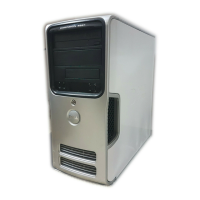
